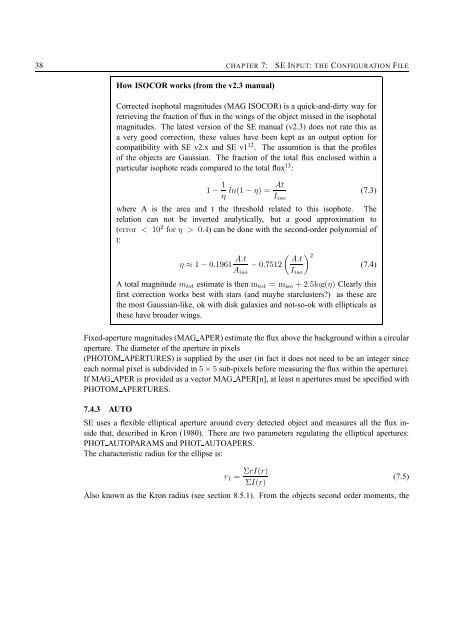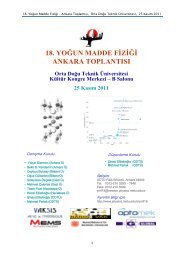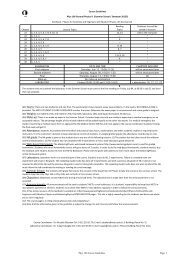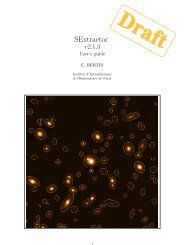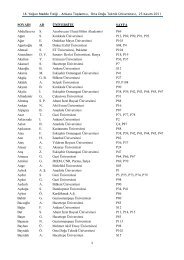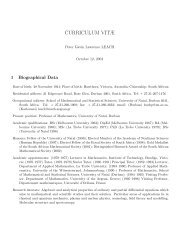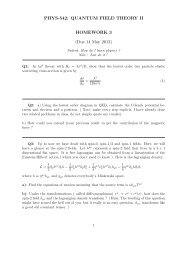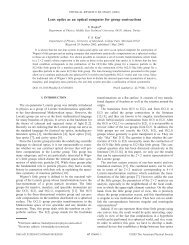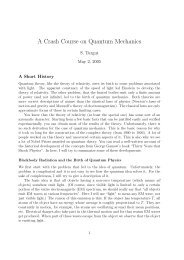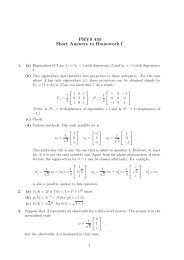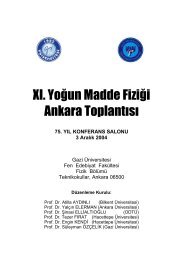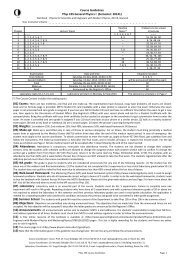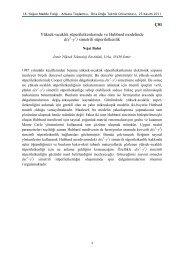Sextractor for dummies - METU Astrophysics
Sextractor for dummies - METU Astrophysics
Sextractor for dummies - METU Astrophysics
Create successful ePaper yourself
Turn your PDF publications into a flip-book with our unique Google optimized e-Paper software.
38 CHAPTER 7: SE INPUT: THE CONFIGURATION FILE<br />
How ISOCOR works (from the v2.3 manual)<br />
Corrected isophotal magnitudes (MAG ISOCOR) is a quick-and-dirty way <strong>for</strong><br />
retrieving the fraction of flux in the wings of the object missed in the isophotal<br />
magnitudes. The latest version of the SE manual (v2.3) does not rate this as<br />
a very good correction, these values have been kept as an output option <strong>for</strong><br />
compatibility with SE v2.x and SE v1 12 . The assumtion is that the profiles<br />
of the objects are Gaussian. The fraction of the total flux enclosed within a<br />
particular isophote reads compared to the total flux 13 :<br />
1 − 1 η<br />
ln(1 − η) =<br />
At<br />
I iso<br />
(7.3)<br />
where A is the area and t the threshold related to this isophote. The<br />
relation can not be inverted analytically, but a good approximation to<br />
(error < 10 2 <strong>for</strong> η > 0.4) can be done with the second-order polynomial of<br />
t:<br />
η ≈ 1 − 0.1961 A.t ( ) A.t 2<br />
− 0.7512<br />
(7.4)<br />
A iso I iso<br />
A total magnitude m tot estimate is then m tot = m iso + 2.5log(η) Clearly this<br />
first correction works best with stars (and maybe starclusters) as these are<br />
the most Gaussian-like, ok with disk galaxies and not-so-ok with ellipticals as<br />
these have broader wings.<br />
Fixed-aperture magnitudes (MAG APER) estimate the flux above the background within a circular<br />
aperture. The diameter of the aperture in pixels<br />
(PHOTOM APERTURES) is supplied by the user (in fact it does not need to be an integer since<br />
each normal pixel is subdivided in 5 × 5 sub-pixels be<strong>for</strong>e measuring the flux within the aperture).<br />
If MAG APER is provided as a vector MAG APER[n], at least n apertures must be specified with<br />
PHOTOM APERTURES.<br />
7.4.3 AUTO<br />
SE uses a flexible elliptical aperture around every detected object and measures all the flux inside<br />
that, described in Kron (1980). There are two parameters regulating the elliptical apertures:<br />
PHOT AUTOPARAMS and PHOT AUTOAPERS.<br />
The characteristic radius <strong>for</strong> the ellipse is:<br />
r 1 = ΣrI(r)<br />
ΣI(r)<br />
Also known as the Kron radius (see section 8.5.1). From the objects second order moments, the<br />
(7.5)


